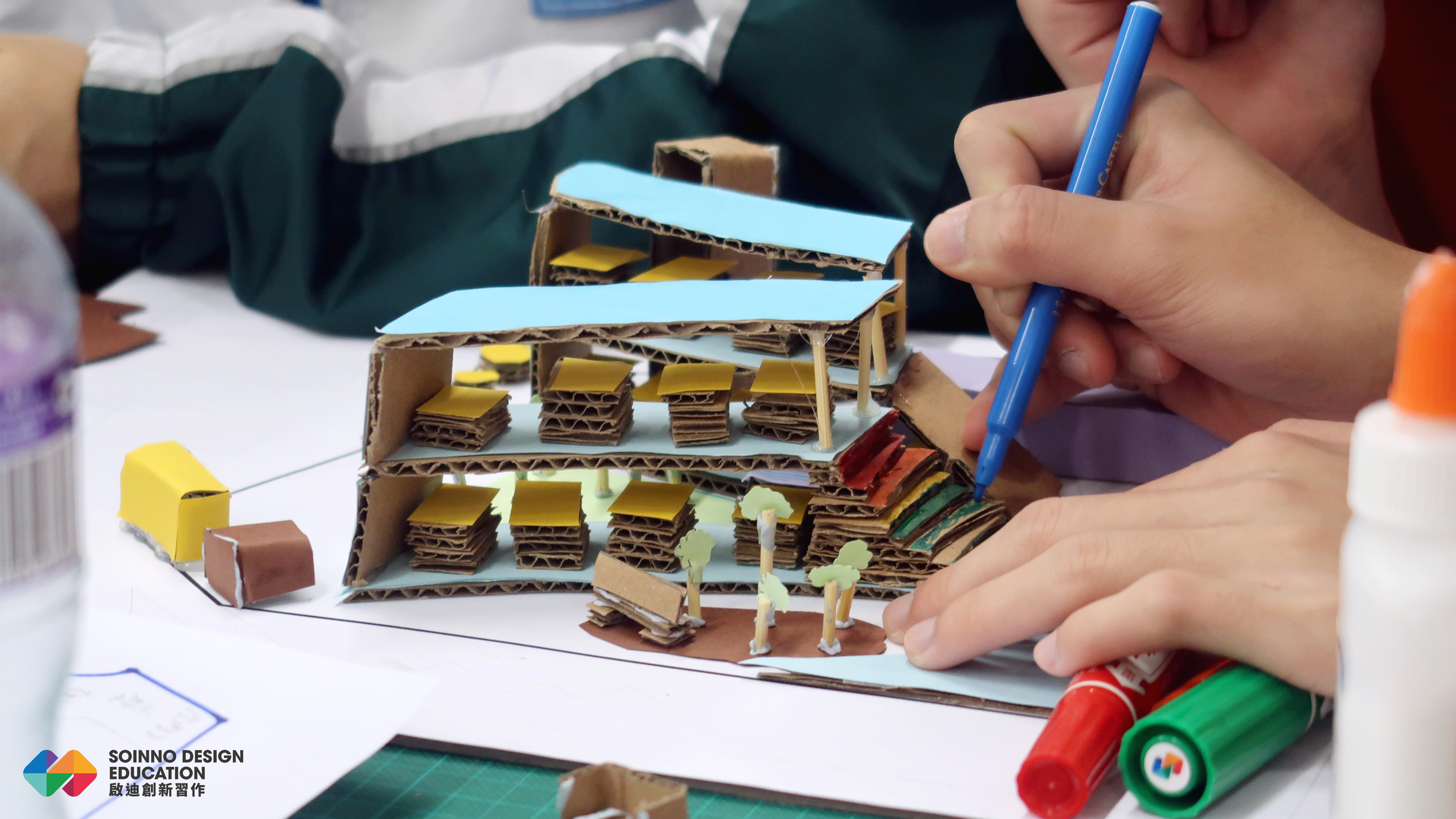Kay Chan, a product designer who specializes in sustainable design and community projects, hosted the Soinno Design Education Workshop for a group of students from Shun Tak Fraternity Association Yung Yau College. During which, all participants were engaged in designing a market that meet the principles of sustainable development. In our interview with Kay, she reviewed the design thinking process of the student participants and share the tips on facilitating self-directed learning among secondary students.
Interviewer: What is the theme of this workshop?
Kay: The key task is to redesign Tin Sau Bazaar in collaboration with Shun Tak Fraternity Association Yung Yau College and rename the Bazaar as the “Tin Sau Hub”. Tin Shui Wai is a large-sized community and Tin Sau Bazaar takes up quite a lot of space. Nonetheless, does it meet the needs of the local community? This issue remains unresolved. As time goes, the composition and local activities of the population concerned might have changed already. Therefore, we need to re-examine whether Tin Sau Bazaar can be used otherwise and this idea has given rise to a chance for students to understand the community.
The tutors, myself included, taught the students how to understand the communal needs through a design thinking mindset. We posed questions like “What are the essential elements of a sustainable community?” “What are the rooms for improvement?”. Once the students had finished their research and investigation, they then set their goals, redesigned Tin Sau Bazaar and created a physical market town model that comprises the elements required by the local community. The students also anticipated the services and activities which might take place there.
Interviewer: What is the curriculum you and the school teachers co-designed together?
Kay: I was involved in different types of collaboration with the teachers from Yung Yau College. For instance, Teacher Raymond from the Maths team. One of the maths unit is about statistics and it covers doing interviews with questionnaires. Also, the workshop involves human geography and urban development. Moreover, in terms of tourism and hospitality, the workshop also ties in with sustainable tourism.
Students can deepen their learning of the three academic subjects above through the workshop. For example, the classroom assignment on interviews with questionnaires could be utilized in the workshop. Indeed, students could apply what they have learnt from the subject to the task of understanding the problems and needs of Tin Shui Wai citizens. It did not only motivate students further, but also helped them realised the connection between their learnings in maths and daily lives.

Interviewer: How do you guide students to organize their thoughts step-by-step?
Kay: They were very lost from the moment they had finished their interviews with questions to the point where they started to brainstorm the solutions. They had no idea as to how the whole venue system would run with their proposals.
We offered a tool called the “System Map”. It is a systematic mapping tool that helps the students to incorporate all the workflow elements together, for things like resources, outcomes, key players and logistics etc.
Through the System Map, the students could reorganize their proposals. How did these elements operate together? Were some steps too complicated? Were there any bugs? Would the operation work in a cycle instead of one-off manner? System Map enabled them to think of a proposals with the sustainable principles in mind.
Interviewer: When students came up with different solutions, how did you guide them further in the design thinking process?
Kay: When they reach the point with several solutions in hands, they were asked to use another tool called “Idea Battle Cards” to assess the pros and cons of their proposals. I could then lead the discussion on the project design criteria and core idea of each proposal throughout this process. Hence, the Idea Battle Cards would reorient their thinking towards whether there was a strong correlation between their proposals and project objectives.
Students usually selected a proposal right way after the initial assessment, however, they would gradually began to realize the merits of other proposals. As a result, they would screen and select the worthy and nice elements from different proposals, then incorporated such into the winning proposal for refinement. It actually gave rise to the opportunity to polish and refine the original proposal and stimulated their multi-lateral thinking.

Interviewer: When students sensed their own lack of creativity, how did you inspire them to materialise their ideas?
Kay: When students applied their proposal into real dimensions, they seemed to be a bit lost. At that moment, I encouraged them to cut some shapes and start assembling different layouts within the designated space. This was meant to help them visualising 3D-images with 2-dimensional shapes. For example, circles, squares, rhombuses, trapeziums etc, which could be mixed and matched. Students could use these shapes to create different zonings first and then built 3D objects on them. For instance, a group of students used streams of pedestrians to conceive their plans and applied either the linear, radial or focal approach to design their space.
On top of this method, I would also ask students to associate irrelevant items and put them into a floor plan to create randomized brainstorming. For instance, a group of students put gears and a pin-ball machine into the floor plan initially, after they randomly tried more items, they discovered the ideal shape of tamagoyaki (Japanese egg roll). The students placed a tamagoyaki on top of another and created a two-tier space. We then realised that, each group had its own approach of transforming the initial proposals into a floor plan.
